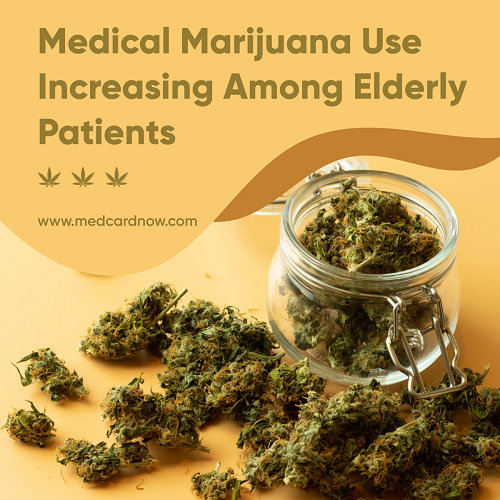
Several studies demonstrate that Americans aged 50 and above have a higher chance of using cannabis now than they did three decades ago. The rate of utilization among younger generations stayed the same across those aged 30 and above. As cannabis continues to gain acceptance as a treatment for a variety of health conditions, it’s no wonder that marijuana use is on the rise among elderly patients. In fact, some studies suggest that cannabis may be a better alternative to other medications currently used to treat elderly patients.
Currently, as the Baby Boomers turn 60 years and above, most of them may return to consuming cannabis, which was popular but illegal in their youth but has now become legal in several US states. A 2013 study from the National Council for Aging Care revealed that four out of five doctors approve of uses medical marijuana and almost all medical marijuana patients acknowledge that it helps to treat their conditions. The study mostly consisted of seniors, with more than 2,300 respondents.
Medical marijuana is gaining popularity
Medical marijuana is gaining popularity partly among the silver-haired set partly because of its ability to relieve pain without little or no side effects. Symptoms such as arthritis, joint pain, back pain, nerve damage, headaches, and muscle spasms can be relieved by consuming medical marijuana topically, i.e., through lotions, rubs, and creams. Patients suffering from depression, anxiety, Alzheimer’s Disease, and degenerative diseases like Parkinson’s Disease and multiple sclerosis can also gain relief from using marijuana. Medical marijuana also reduces nausea and vomiting that comes from cancer treatment such as chemotherapy and radiation.
Medical marijuana is also an effective appetite medicine and helps with eating disorders such as bulimia and anorexia, which mostly affect the elderly. The reason for the inability to eat is due to poor body image or other psychological reasons, and anorexia kills about 80 percent of elderly people. The common treatment for eating disorders among the elderly include antipsychotics and antidepressants, but these medications have been reported to worsen symptoms rather than relieve them making most doctors begin considering medical marijuana as a safer alternative to traditional prescription drugs.
Apart from pain relief, medical marijuana may also be beneficial for the aging brain. A study conducted in Germany showed that a group of older mice performed better than younger mice in cognitive tests after being ingested with THC, insinuating that medical marijuana may increase functioning among the elderly.
While Baby Boomers prefer to use medical marijuana to ease pain, lift depression, and reduce anxiety, our current generation prefers to use cannabis recreationally. Most baby boomers used marijuana in their teens due to the popularity of the plant at that time. But with the legalization, cannabis no longer carries the stigma of being socially unacceptable.
People aged 50 and above can use medical marijuana as a safe alternative to pharmaceutical pills. Cannabis is safer and more effective than most prescription drugs. It also offers pain relief and treats insomnia for the elderly without any negative side effects.



